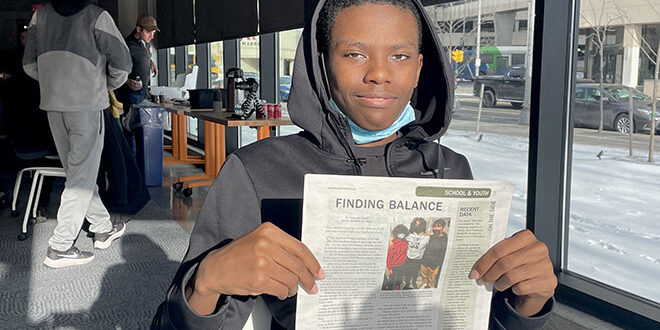How students manage school, socializing, jobs and mental health during the pandemic
By Cashmere Dancil
For American teenagers getting a job in high school marks a coming of age; a sign that they can now make their financial decisions and are accountable for getting to work on time, maintaining their grades, friendships and their mental health.
But for Syracuse students this indicator is tainted by the once in a century COVID-19 pandemic, which now is in its third calendar year.

Jaden Davis, Abdul Shaalan and Thomas Ho are all 11th graders at the Institute of Technology at Syracuse Central. Additionally, all three also work as cashiers at different workplaces like Price Chopper and Wegmans.
Teens from ages 14 to 15 can work at least three hours on a school day and eight hours on other days, most likely on Saturday and Sunday. Their maximum weekly hours average around 18 hours, according to the New York Department of Labor.
While teens ages 16 to 17 can work four hours Monday through Thursday and eight hours on Friday, Saturday, Sunday and holidays, with a maximum of 28 hours a week.
Jaden said he got a job to help pay bills but says working through the pandemic has him very tired and drained. He adds, he felt like he didn’t have a personal life because all he did was go to school, work and then sleep.
To balance all of this, he watches movies and TV shows on Netflix to unwind.
Nearly all students from kindergarten to 12th grade have experienced some challenge to their mental health and well-being throughout the pandemic — many losing access to school-based support services, according to the report “Education in a Pandemic: The Disparate Impacts of COVID-19 on America’s Students,” by the U.S. Department of Education.
The average employment rate for youth ages 16 to 17 in 2020 was 22.3%, down 2 percentage points from 2019, according to pewresearch.org.
Thomas Ho wanted a job so he could help out with his family household more. He says he was of age to work and he wanted money. But he noted after working, he has had less time to do schoolwork because he gets tired from his job.
Once, he couldn’t make up a quiz, and added he feels miserable and not good.
Thomas balances all of this by playing games on his phone with friends.
While the average rate of employment for teens was slightly down in 2020, those who are trying to balance both can see the stress become detrimental to the student’s physical and mental health — if there are not boundaries and balance between the two.
Abdul noted that he puts priorities ahead of work like school and friends, but sometimes he does get tired after long days.
He says he wanted a job so he could depend on himself without having to ask his family or friends for money. It felt natural to him to work more than anything else he had going on.
To balance all of this he hangs out with his girlfriend and friends in his free time.
Other ways to help balance a student’s mental health is by going for a walk, calling a friend or taking deep breaths.
Cashmere Dancil is a high school student participating in the Syracuse Journalism Lab
 The Stand
The Stand


